There are endless cliches out there about the importance of a first impression, but whatever truth they may hold in our everyday lives they go double for film. When there’s only a couple of hours to tell a story and capture its players, an audience’s first chance to meet a character is an asset no filmmaker worth their salt is going to waste. So with that in mind, CHUD is going to take a look through the many decades of cinema to extract the most special of those moments when you are first introduced to a character, be they small moments that speak volumes, or large moments that simply can’t be ignored.
Inevitably it will be the major characters and leads that are granted the grandest of entrances, but don’t be surprised to see a few supporting players and minor individuals get their due, when the impact of their appearance lingers longer than their screentime. Also know that these moments may be chosen for any number of reasons, and the list could never be exhaustive. But here you’ll find moments that make a big splash, say a lot with a little, or we think are just particularly cool.
We hope you enjoy, and can’t wait to hear from you about each and every entry. Don’t spend the effort guessing future choices or declaring what must be included– just enjoy the ride!
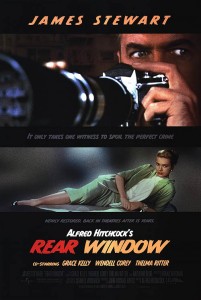
The Film… Rear Window (1954)
Director… Alfred Hitchock
Entering From Stage Left… Grace Kelly in the role of Lisa Carol Fremont.
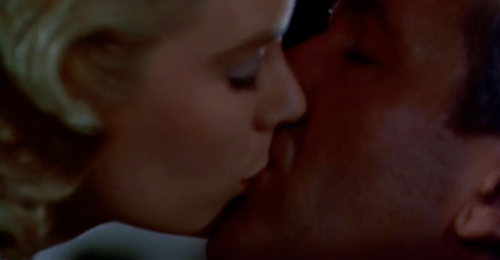
What Makes it Special… The actress and the filmmaker.
Grace Kelly’s film career lasted only five scant years. 1951-1956. But like James Dean (whose career coincidentally spanned 1951-1955), Kelly’s presence in Hollywood would prove far from fleeting. Both Kelly and Dean’s legends were kept alive by the nature of their early retirement – Dean died in a car wreck; Kelly got off a bit better, fulfilling the Disney fantasy of becoming a princess, marrying Rainier III, Prince of Monaco (although, oddly enough, Kelly too died in a car wreck in 1982) – but hitting the tabloid jackpot can only carry one so far through history. Kelly most likely would be nothing more than an interesting Hollywood anecdote for Entertainment Weekly to delight readers with in a three-page spread – did you know that the Quaker girl from High Noon became a princess? – if she hadn’t joined forces with Alfred Hitchock. But she did. Hitch was famous (or infamous) for his obsession with blondes. And Kelly was his most resplendent flaxen muse. Also his favorite. Together they made three films – Dial M For Murder, Rear Window, To Catch a Thief – before Kelly’s sudden withdrawal from acting. Her departure was a major blow to the Master of Suspense, and he spent the rest of his career trying to mold various actresses, with varying success, into a new Kelly. (Vertigo can easily be taken as an abstract bit of autobiographical art.) Creepy? Sure. But his obsession with Kelly made for some damn good cinema. It’s not difficult to make the entrance of an attractive woman pop off the screen. Cinema is riddled with memorable (even iconic) female introductions, but almost all of them cheaply rely on sex and nothing more, the character/actress reduced to breast-heaving, hips-swaying eye candy as she enters a class-room, descends a staircase, or runs down a beach in slow motion. Hitch’s goal in Rear Window isn’t any different – he wants us to desire Grace Kelly – but he does it with a sly class that delivers the intended sex appeal while also leaving Kelly seeming utterly resplendent.

I’m going to assume you all know the basic gist of Rear Window, even if you haven’t seen it (for you wee ones out there, its Disturbia with old people).
We’ve spent sixteen minutes with wheel-chair-bound photographer L. B. “Jeff” Jeffries (James Stewart), as he lazily spies on his neighbors’ mundane lives, as he trades quips with his colorful nurse played by Thelma Ritter, as he naps. Then, during one of these naps, as night has fallen, a shadow slowly creeps up Jeff’s face. There is no reason Jeff would be in danger only sixteen minutes into the film, but this is Hitchock after all, so a shadow rising on a man’s sleeping face carries a certain implicit ominous tension. Then Jeff opens his eyes, and sees…
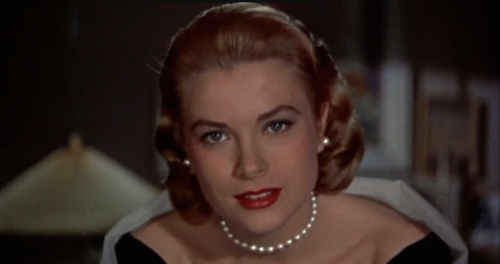
…one of cinema’s most beautiful faces, closing in on him. Hitchcock holds the shot of Lisa’s face, in fairly extreme close-up, for almost too long. The moment is being savored, in a magical haze. Post-production slow-mo is used when Lisa moves in and plants a tender but loaded kiss on Jeff’s mouth. Then the tone of the scene shifts from magical to light when they speak.
Lisa: How’s your leg?
Jeff: Hurts a little.
Lisa: Your stomach?
Jeff: Empty as a football.
Lisa: And your love life?
Jeff: Not too active.
Lisa: Anything else bothering you?
Jeff: Uh-huh. Who are you?
Then Hitch really lays it on us. Playing along with Jeff’s potentially mood breaking levity, Lisa proceeds to move about the apartment, introducing herself one name at a time as she turns on Jeff’s lights, illuminating things in more ways than one.
Lisa: Reading from top to bottom…
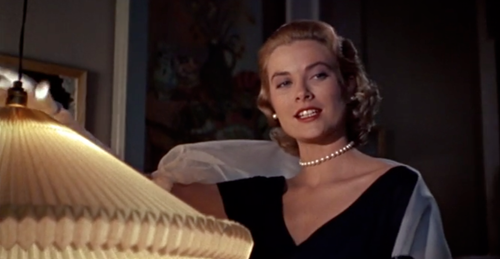
Lisa…
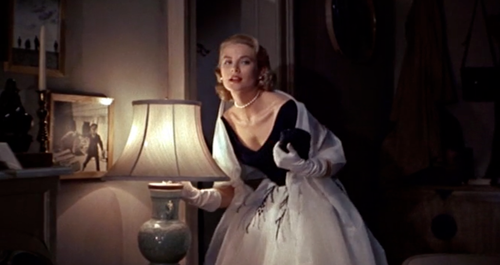
Carol…
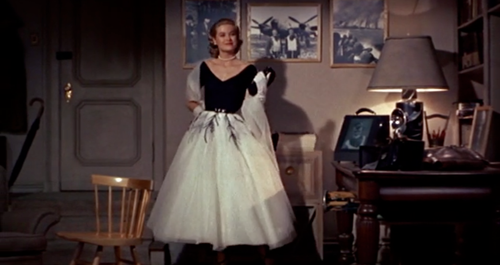
Fremont.
Why it Resonates… This isn’t the kind of introduction in which we immediately grasp all there is to grasp about a character. Lisa looks quite fancy. Is she a wealthy socialite? Was she coming from a swanky function? How serious is their relationship? How old is she supposed to be? But we don’t need this information yet to fall for her. Within mere moments we’re hooked on Lisa Carol Fremont. And not just physically. The way Hitchcock stages the scene, the intimate close-ups giving way to her tiered withdrawal from the camera, pulls us effortlessly into her little name game. The gimmick of Lisa saying her name in installments as she turns on lights could have come off as cheap quirk, but it doesn’t. The moment feels oddly natural. We sense Jeff and Lisa have a fun relationship, romantic but not over-serious. They play little games.
But detaching emotionally from the scene, this is just a textbook great way to introduce a romantic lead. While it certainly isn’t mandatory that we remember a character’s name in order to like said character, on a certain subconscious level it helps. In fact, an easy way to make a character feel important in a movie is to get us to commit the character’s name to memory before we ever see them (like Keyser Soze or Willy Wonka). This scene puts Lisa’s name in bold. On paper Lisa immediately clicks. Adding Grace Kelly to the works just makes it click that much more.
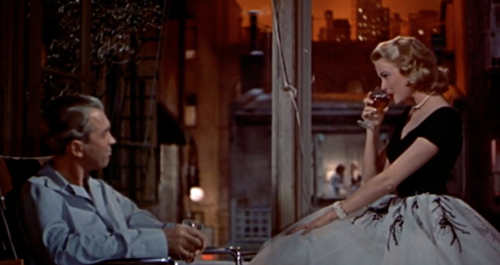
Other Grand Entrances… The courtyard. One of Hitch’s most elegant bits of filmmaking is the opening shot to Rear Window, a single take pan that drifts across the courtyard of Jeff’s apartment complex and casually introduces us to the host of neighbors (all glorified extras really) whose lives we shall being peering in on for the remainder of the film, before eventually sliding into an apartment to introduce us to Jeff, napping in his wheelchair. Though the slightly jerky camera moves feel dated now (in our world of computer controlled camera mounts and steady-cams) the shot remains a marvelous bit of broad stroke visual storytelling. And standing in stark contrast to Lisa’s grand entrance, Rear Window may feature one of cinema’s most interestingly blasé villain introductions ever — that of the murderous Lars Thorwald (Raymond Burr), who we first see as simply one of Jeff’s many neighbors. Lars first scene – in which he comes home from work and gets nagged by his wife – mainly seems to serve as visual elaboration to the phone conversation Jeff is having with his editor about unhappy marriages. This is of course part of Hitchcock’s brilliant slow burn, as Thorwald somewhat surprisingly grows into a frightening monster. A less confident filmmaker would surely have constructed a way for Jeff to have had a closer encounter with Thorwald at the beginning of the film. But keeping Thorwald at a courtyard-distance the entire film only increases the impact of the climactic moment when Thorwald breaks into Jeff’s apartment, and the two men finally come face to face.
Day 3: Groucho Marx (Duck Soup)
Day 4: Jackie Gleason (The Hustler)
Day 5: Orson Welles (The Third Man)
